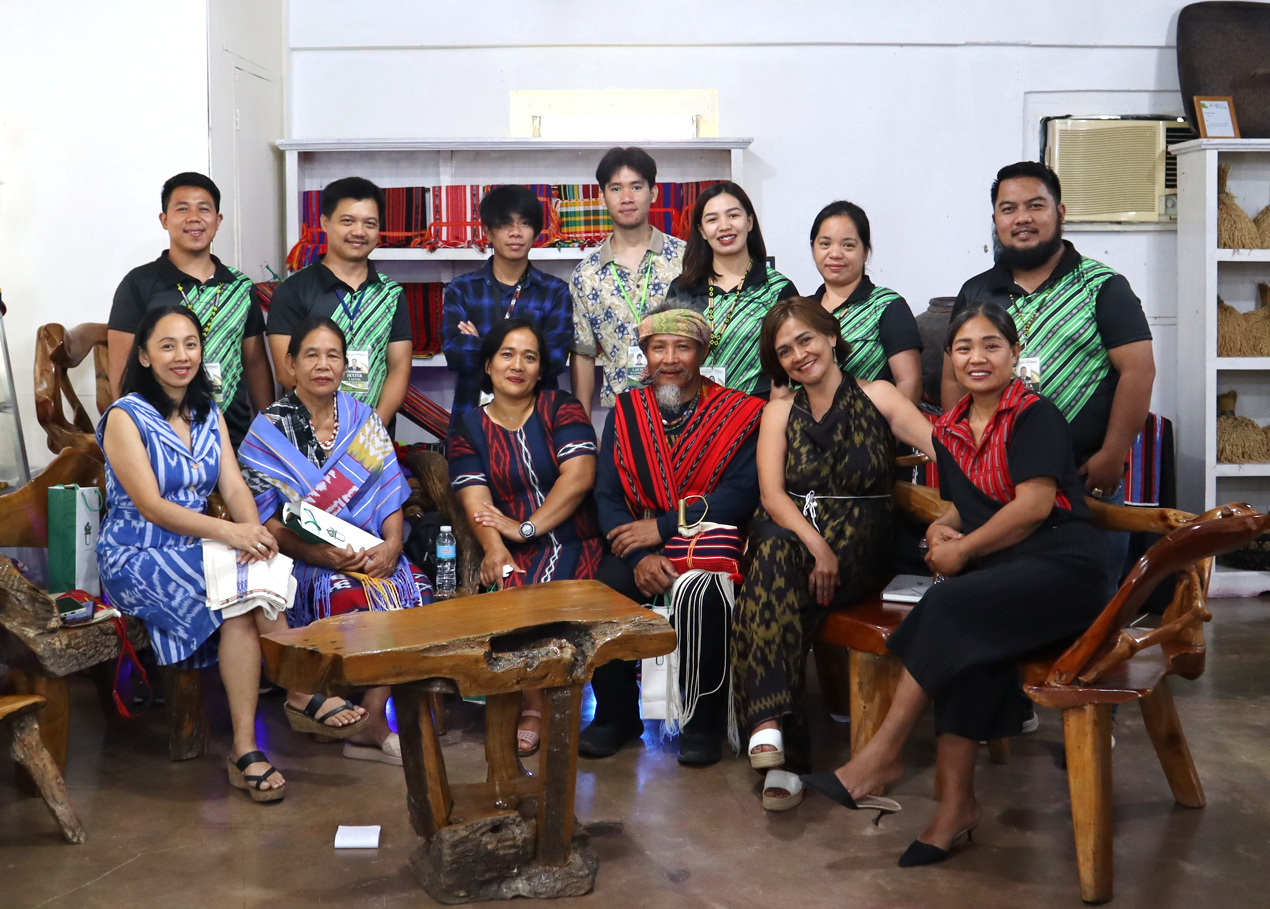




The R&D Center for Ifugao Rice Terraces as Globally Important Agricultural Heritage Systems (IRT-GIAHS) organized a live interview with three community weavers and a fashion designer of Ifugao traditional and contemporary weaving designs broadcasted at the International Innovation Center for Indigenous Studies Facebook Page as part of the celebration of Women’s Month on March 20, 2024. Hosted by Stephanie S. Ayahao of the IRT GIAHS Center, and Edna K. Butticon of the Ifugao Rice Cultural Museum, the broadcast explored weavers' inspirations, opportunities, and challenges.
The guests have diverse backgrounds. Community weaver Ruben M. Gumangan of Asipulo, 56 years old inherited his weaving passion from his grandmother. On the other hand, Benita D. Balangto, a weaver from Banaue chose to weave after leaving school. On her part, Jennilyn B. Olnanigon is an inspired weaver of Kiangan with Hingyon roots and advocates for the promotion of weaving culture. Miriam M. Nadugo who hails from Lagawe is an inabol or woven fabrics fashion designer.
The talk show lasted more than an hour with the weavers sharing their personal stories, the significance of traditional and contemporary weaving designs, individual struggles, and challenges in the weaving industry. The weavers learned the art of weaving from their parents at a young age as early as ten years old. Despite their reluctance, they still learned weaving to help their parents.
Gumangan shared he first learned weaving ‘runners’ in 1975 taught by his grandmother. He started doing designs in the 1980s. Recounting his grandmother’s words, “Ikaw ang natitirang apo ko dito, kahit na lalake ka dapat mong umpisahan, dahil ang mga ate mo nasa college na sila. (You are my only grandchild left here, so even if you are a boy, you have to start, because your elder sisters are already in college.) He said, “I can only obey way back then because I stayed with my grandmother who was a weaver.”
For her part, Balangto said, “When my mother asked me to help her, I used to run away because it’s very hard to do mumbayat (warping).” While Olnanigon learned to weave because her mother could not weave without her help in the spinning of threads and warping.
The weavers share a common passion for the weaving culture. Gumangan shared that he was even more inspired in the pursuit of mastering and sharing his weaving knowledge. He is often invited to IKSP seminars on weaving. Balangto added, “Hindi dapat ma-abandona ang weaving natin kahit nasa school sila. (Our weaving shouldn’t be abandoned even though most of our children are going to school.” She is worried that without intervention, the youth might become disinterested in weaving. Recounting too, that her passion for weaving career was amplified with the programs of government agencies and institutions.
Weaving has its challenges. Gumangan and Balangto shared that back in the days when the industry was starting to thrive, financial stability was a problem. This situation was aggravated by the nonpayment of finished products taken by clients. Nadugo relates to this situation. As a fashion designer for inabol, she needs to purchase raw materials outside of the province which adds to the expenses. She added that few weavers can produce intricate designs that she can use in her business. She also noted that there is a decline in the weaving industry.
There were also issues with selling inabol to Ifugaos and non-Ifugaos. Balangto recalled one incident when a store owner sold a blanket to a tourist knowing that in Ifugao culture the fabric is used for the dead. But to make a living, the textile was sold. Olnanigon observed some of Ifugaos do not have an appreciation for the cultural significance and aesthetics of the heritage fabrics. She associated this with the introduction of Western clothing trends.
Still, there is hope for the Ifugao weaving industry. All the guests agreed that there is a need to encourage the younger generations to learn and appreciate this part of our heritage. They shared their promotion strategies like proud-wearing the woven products, teaching the meaning of the designs to individuals, or accepting mentorship for the different agencies that need their cultural knowledge. “I wear my designs and post it on social media,” said Nadugo. Olnanigon on the other said that her children wear her woven products.
Let us support our local weavers and entrepreneurs. IFSU is committed to contribute in keeping the weaving tradition alive. A weaving hub and assessment will soon be established at the University to cater to all weavers and enthusiasts.#